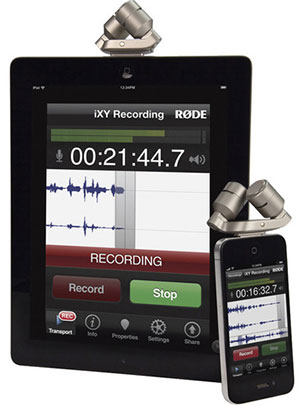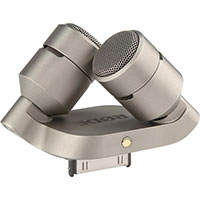 The Haas effect is a cool way to create a stereo effect even when we don’t have a stereo source – or even two distinct sources to start with. Typically, if you didn’t record in stereo (with two mics or a stereo mic), multiple takes will provide the best results when you’re looking for a nice, thick stereo sound. Usually I record two mono takes of a guitar part, put each on its own track, and pan those tracks left and right. I actually prefer this doubling method to real stereo (recording a single performance with two mics facing different directions to create a difference in each channel). For a review of stereo basics, see our article 5 Audio Recording Tips For Newbies – Part 1: Stereo Or Not?
The Haas effect is a cool way to create a stereo effect even when we don’t have a stereo source – or even two distinct sources to start with. Typically, if you didn’t record in stereo (with two mics or a stereo mic), multiple takes will provide the best results when you’re looking for a nice, thick stereo sound. Usually I record two mono takes of a guitar part, put each on its own track, and pan those tracks left and right. I actually prefer this doubling method to real stereo (recording a single performance with two mics facing different directions to create a difference in each channel). For a review of stereo basics, see our article 5 Audio Recording Tips For Newbies – Part 1: Stereo Or Not?
But we don’t always have the option to record something in stereo. Maybe we don’t have enough mics, or the right kind of mics. Maybe the space we’re recording in limits us. Or, as in one case I had, the client brings in a piano recording from a digital piano that was captured in mono only. How can we thicken up the sound to at least approximate a stereo-like effect?
The Haas Effect is a curious phenomena, resulting from our brains trying to make sense of the world around us. If two separate versions of a sound occur in rapid succession – separated by a few milliseconds, human brains “fuse” these two sounds into one. This fusion continues to occur until somewhere between 40 and 50 milliseconds, at which point our brains will start to hear the events as two separate sounds (depending on what kind of sound we’re talking about). There are several interesting things that happen regarding how our brains give priority to the first sound – even suppressing information about the 2nd – in the research surrounding the Haas effect. See This wikipedia article about The Precedence Effect – https://en.wikipedia.org/wiki/Precedence_effect.
But the big take-away from the above is that if you take a single audio source, copy it to create a second version of it, and offset/delay that 2nd version by about somewhat less than 50 milliseconds – try between 30 and 40 ms – your brain will still not (depending on what type of sound it is) hear the sound as two completely separate sounds. But if you pan the sounds left and right, your brain will hear the one sound as more spread out – “wider,” than the sort of point-source of the original mono sound.
As easy as it often is to record another track of certain sounds (like my guitar) to make a nice, thick stereo sound when panned left and right, sometimes that isn’t an option. When you need a track of a song to have a stereo sound, but just panning a mono track isn’t good enough, using the Haas Effect can be highly beneficial. Start by duplicating the track and using a delay between 30 and 40 milliseconds. Delays longer than that risk being heard as separate sounds, and shorter than that may not provide the desired stereo effect. Then pan each version of the sound, one to the left, and the other to the right. This will spread the sound out on the sound stage, making it sound wider and more full. If you try this without delaying one of the tracks in time however, you’ll end up with just a louder version of the same thing coming from dead-center. The brain needs the time difference.
This effect is part of the process for sound localization. The short version of that link is that with multiple sources for data collection (nerves in our fingers, ears, etc.), the brain kind of ignores the duplicates to concentrate on the strongest signal (actually the more “salient” signal – see that article on The Precedence Effect referred to above), and uses the other information to tell us about the origin of the signal.
This is usually not the first method of choice for producing a stereo-type effect. But when you’re out of other options, it sure does beat plain old mono. Try experimenting with the delay to find what sounds best, as well as playing with how far each track is panned. You can also try adjusting the sound level of each track to see what effect that gives.
Play around with the Haas Effect to see what sorts of possibilities there are, and then put it in your bag of tricks. You may not need it today, or even tomorrow, but you’ll be glad to have it available when you do need it. It sure came in handy when that lady brought her mono digital piano recording into the studio. It literally saved her project.
Have fun playing with this psycho-acoustic effect!
stereo
Creating Spacious Stereo With Mic Spacing
Spacing multiple mics creates a delay between each recording, adding to the stereo effect. It doesn’t have quite the same sound as just panning a track left or right, do it’s worth giving it a try. Because the stereo effect is influenced by the amount of delay between each track, you may need to experiment a bit with more or less space between the mics. Try it out at your next recording session.
You can read more details about how to influence the stereo effect with mic placement here: http://www.prosoundweb.com/article/better_recording_microphone_techniques_to_produce_warm_spacious_stereo/P3/
24-Bit Microphone For iPhone and iPad: RODE iXY Stereo Mic
 It isn’t quite available yet (thought I’d get that out of the way up front:)), but you can pre-order it! It’s the Rode iXY microphone for iPhone and iPad.It plugs into the 13-pin dock connector of your device as opposed to the headphone jack like so many other iOS mics. This is incredibly cool!
It isn’t quite available yet (thought I’d get that out of the way up front:)), but you can pre-order it! It’s the Rode iXY microphone for iPhone and iPad.It plugs into the 13-pin dock connector of your device as opposed to the headphone jack like so many other iOS mics. This is incredibly cool!
I use a Rode microphone as my primary vocal mic – The Rode NT2-A, and it’s awesome, just like all Rode mics. So I’m particularly excited to get my hands on a mic made by Rode that works with iPads and iPhones. To date, most of the really good mics that work with iPads and iPhones plug into the dock connector like the iXY, but have been rather large mono mics, like the Blue Spark Digital and the Apogee Electronics MiC – see our article about those two mics here: Two New Studio Quality iPad Microphones. This new Rode mic will be an high quality mic like those two, but will be very portable and of course, will be stereo (hence the two half-inch cardioid condenser capsules). By the way, these two capsules are in the “X-Y” stereo configuration, which is why they point out and away and 90 degree angles.

The iXY will turn an iPhone into an incredibly handy and high-quality field recording device. The video recording crowd are already very much looking forward it, since it will allow them to attach the iPhone to their cameras and plug it into the external mic input (not all camcorders have external mic inputs, though – fair warning, fet one that does).
As for some specs, the mic is capable of recording 24-bit 96-KHz (sampling frequency) audio, which is fabulous. And you can record audio using any iOS audio recording app, though I highly recommend using Rode’s new recording app, the Rode Rec Audio – see more about that in our post here: RØDE Rec Audio Recording App For iPhone And iPod Touch.
OK, so you’re convinced and want one now? I know, it isn’t out as of January 11th, 2013. HOwever, you CAN pre-order yours from B&H Pro Audio! Just Click Here to do that, and it will come to you when it arrives, which is projected to be in early March 2013. Good things come to those who wait;).
Mono or Stereo – Your output may vary
We all know stereo sounds ‘better’, so why bother recording in anything else? As a general rule, unless you are recording through more than one microphone you are recording a mono track. This track can later be panned left or right to provide stereo output. A mono track panned to the center is identical to a stereo track with identical left and right channel output. If you want the thick sound of stereo, you can layer mono tracks. It’s possible to copy and layer a single take, but the results won’t be quite as good. The extra time to record multiple takes to layer will show in your final product.
Take a look at the full article here: http://thedawstudio.com/Tips/Mono_and_Stereo.html
Using Stereo On Live Performance Speakers?
Since stereo sounds so good on recorded music – we wouldn’t THINK about not creating a stereo mix for recordings – it seems like we should also try for stereo when playing live, right? Well that may or may not be true. But if you think about it, recorded music is almost always listened to when were are close to, and between both speakers – in headphones, over car speakers, on docking stations, home entertainment centers, etc. But at a live concert, there will be folks NOT between the speakers at all, so they might only be able to hear the stuff mixed into one of the L/R channels (not good).
Here’s an article that talks about the pros and cons of trying to use stereo for live sound.